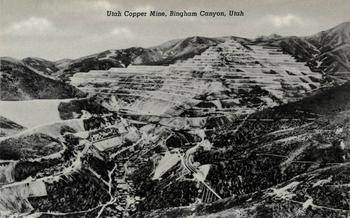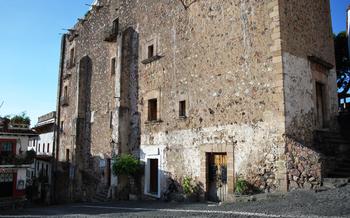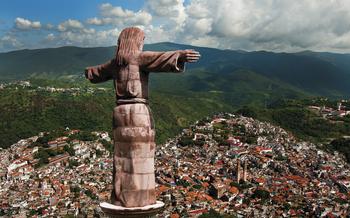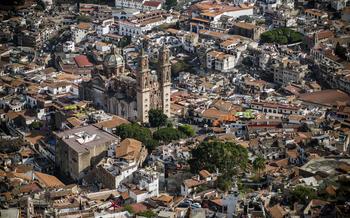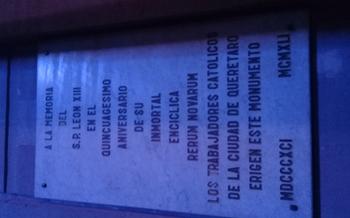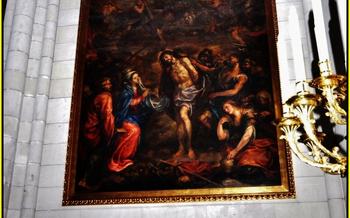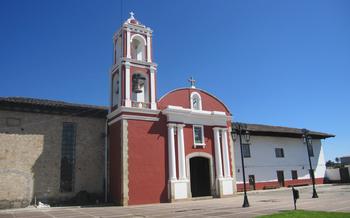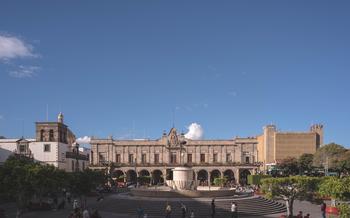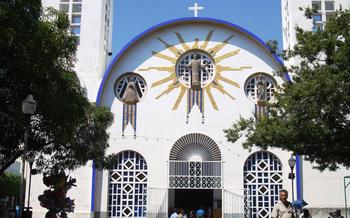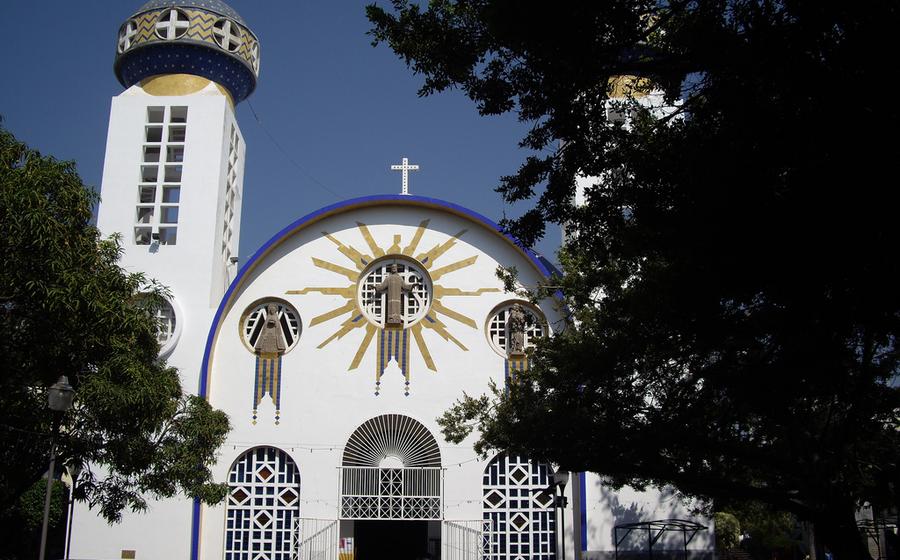
Nuestra Señora de la Soledad Cathedral
- Nuestra Señora de la Soledad Cathedral: A Masterpiece of Colonial Architecture
- Exploring the Interior: A Realm of Sacred Art
- History and Legacy: A Witness to Acapulco's Past
- Religious Significance: A Center of Devotion
- Guided Tours: Unveiling Hidden Stories
- Photography and Videography: Capturing the Beauty
- Dress Code and Etiquette: Showing Respect
- Accessibility: Ensuring Inclusivity
- Location and Transportation: Finding Your Way
- Nearby Attractions: Exploring Acapulco's Treasures
- Local Customs and Traditions: Understanding the Culture
- Language Considerations: Bridging the Communication Gap
- Insider Tip: Unveiling a Hidden Gem
Nuestra Señora de la Soledad Cathedral: A Masterpiece of Colonial Architecture
The Nuestra Señora de la Soledad Cathedral, a majestic edifice that stands as a testament to the fusion of Spanish colonial grandeur and Mexican cultural heritage, beckons visitors to embark on a journey through history and faith in the heart of Acapulco. Constructed in the 16th century, the cathedral embodies the architectural prowess of its era, showcasing intricate stone carvings, vaulted ceilings that soar towards the heavens, and an awe-inspiring facade that captivates the eye with its Baroque splendor. As a cornerstone of Acapulco's religious and cultural fabric, the cathedral invites travelers to delve into its sacred spaces, unravel its captivating stories, and witness the enduring legacy of faith and devotion that has shaped this vibrant city.
Exploring the Interior: A Realm of Sacred Art
Venturing into the hallowed interior of the Nuestra Señora de la Soledad Cathedral is like stepping into a realm of sacred art. The intricate stained glass windows, meticulously crafted altars, and exquisite sculptures narrate biblical tales, inviting visitors to delve into the depths of faith and devotion.
The stained glass windows, with their vibrant hues and intricate designs, depict scenes from the Bible, casting a kaleidoscope of colors onto the cathedral's interior. Each window tells a story, portraying moments of divine revelation, miracles, and the lives of saints.
The altars, adorned with intricate carvings, gold leaf, and precious stones, serve as focal points for prayer and contemplation. The main altar, dedicated to the Virgin of Solitude, is an awe-inspiring sight, showcasing the artistry and devotion of the cathedral's creators.
Throughout the cathedral, sculptures of saints and angels, crafted with remarkable skill and attention to detail, stand as silent witnesses to the unwavering faith of the community. These sculptures, imbued with both artistic and spiritual significance, evoke a sense of reverence and invite visitors to connect with the divine.
History and Legacy: A Witness to Acapulco's Past
The Nuestra Señora heritage. Its construction began in the 16th century, during the Spanish colonial era, and was completed in the 18th century. The cathedral played a pivotal role in the religious and social life of the city, serving as a center of worship and community gatherings. Over the centuries, it has witnessed significant events and milestones, including the arrival of Spanish conquistadors, the establishment of the port of Acapulco, and the city's transformation into a major trading hub. Despite facing challenges such as earthquakes and renovations, the cathedral has endured as a symbol of faith and resilience, embodying the spirit of the people of Acapulco. Its enduring legacy as a historical landmark and a cherished religious site continues to captivate visitors and pilgrims alike, providing a glimpse into the city's past and its unwavering devotion to the Catholic faith.
Religious Significance: A Center of Devotion
As the heart of Catholicism in Acapulco, the Nuestra Señora de la Soledad Cathedral serves as a place of worship and pilgrimage for the faithful. The cathedral is dedicated to the Virgin of Solitude, the patron saint of Acapulco, who is deeply revered by the local community. Throughout the year, devotees flock to the cathedral to pay homage to the Virgin and seek her blessings. Special religious festivals and processions are held annually, attracting thousands of pilgrims from across the region. These celebrations showcase the vibrant religious traditions of Acapulco and offer a glimpse into the deep faith and devotion of its people.
Guided Tours: Unveiling Hidden Stories
To delve deeper into the rich history, architecture, and religious significance of the Nuestra Señora de la Soledad Cathedral, guided tours are a must. Conducted by knowledgeable guides fluent in various languages, these tours provide an immersive experience, bringing the cathedral's stories to life.
During the tours, visitors can uncover the intricate details of the cathedral's construction, marvel at the symbolism behind its artwork, and learn about the significant role it has played in Acapulco's religious and cultural landscape throughout the centuries. Guides will point out hidden gems and share fascinating anecdotes, ensuring that visitors leave with a deeper appreciation for this sacred space.
Guided tours can be booked in advance or arranged upon arrival at the cathedral. It's advisable to book in advance during peak tourist season to secure a spot. Remember to dress appropriately and arrive on time for your tour. Let the knowledgeable guides take you on a journey through history, revealing the hidden stories behind this magnificent cathedral.
Photography and Videography: Capturing the Beauty
The Nuestra Señora de la Soledad Cathedral offers ample opportunities to capture its architectural grandeur and sacred beauty through photography and videography. However, it is essential to adhere to specific guidelines to ensure respect for the sanctity of the space and avoid disruptions to ongoing religious services.
Photography and videography are permitted within the cathedral, provided they are done unobtrusively and without the use of flash or tripods. Visitors are encouraged to be mindful of ongoing religious activities and to refrain from taking photos or videos that may disturb worshippers or disrupt the solemn atmosphere.
To capture the best angles and lighting, consider visiting the cathedral during the golden hours of sunrise or sunset, when the warm, diffused light casts a magical glow on the intricate facade and stained glass windows. Experiment with different perspectives, such as capturing the cathedral's imposing exterior from across the plaza or zooming in on the delicate details of the interior artwork.
Remember that the cathedral is an active place of worship, and it is crucial to be respectful of the religious beliefs and practices of the local community. Always ask for permission before photographing or filming individuals, especially during religious ceremonies or processions. By following these guidelines, you can capture the essence of the Nuestra Señora de la Soledad Cathedral while honoring its sacred nature.
Dress Code and Etiquette: Showing Respect
The Nuestra Señora de la Soledad Cathedral is a sacred space that deserves utmost respect from visitors. When visiting, it is essential to dress appropriately, considering the religious nature of the site. Revealing or overly casual attire is not suitable for this environment. Opt for modest clothing that covers your shoulders and knees. Avoid wearing shorts, tank tops, or beachwear.
Beyond attire, your behavior and conduct within the cathedral should reflect the solemnity of the space. Be mindful of your noise level, avoiding loud conversations or disruptive behavior. Respect the privacy of others engaged in prayer or contemplation. Refrain from using your phone or taking photos during mass or other religious services.
Remember, the cathedral is a place of worship for the local community. By observing proper etiquette, you demonstrate respect for their beliefs and contribute to a peaceful and reverent atmosphere for all visitors.
Accessibility: Ensuring Inclusivity
The Nuestra Señora de la Soledad Cathedral is committed to providing an inclusive and welcoming environment for all visitors, regardless of their physical abilities. The cathedral features several accessibility features to ensure that everyone can fully experience its beauty and significance.
Wheelchair ramps and elevators are available to assist visitors with mobility challenges in accessing different parts of the cathedral. These ramps and elevators are strategically placed to provide easy and convenient movement throughout the building.
For those who require additional assistance, the cathedral staff is always ready to provide support. Visitors can request assistance with tasks such as navigating the cathedral, finding accessible seating, or obtaining any necessary information.
The cathedral also offers assistive listening devices for individuals with hearing impairments. These devices can be obtained from the ushers or the information desk.
By providing these accessibility features and services, the Nuestra Señora de la Soledad Cathedral ensures that everyone can participate in religious services, admire the stunning architecture, and learn about the rich history of this sacred place.
Location and Transportation: Finding Your Way
The Nuestra Señora de la Soledad Cathedral is conveniently situated in the heart of Acapulco's historic center, making it easily accessible from various parts of the city. Its exact address is Calle Hidalgo 1, Centro, 39300 Acapulco de Juárez, Guerrero, Mexico.
Reaching the cathedral is a breeze, with a range of transportation options available. For those who prefer public transportation, catching a local bus or colectivo (shared taxi) is a cost-effective and convenient way to get there. Simply ask the driver to drop you off at the Catedral de Acapulco, and they'll be happy to oblige.
If you're traveling by car, finding a parking spot near the cathedral can be a bit challenging, especially during peak tourist season. There are a few public parking lots within walking distance, or you can opt for street parking if you're lucky enough to find a spot.
Once you arrive, you'll be greeted by the cathedral's imposing facade, a testament to its architectural grandeur. Take a moment to admire its intricately carved stonework and the twin bell towers that rise above the city skyline, beckoning visitors to step inside and explore this sacred space.
Nearby Attractions: Exploring Acapulco's Treasures
Nestled in the heart of Acapulco's historic district, the Nuestra Señora de la Soledad Cathedral stands as a testament to the city's rich cultural heritage. Beyond its sacred walls, a wealth of captivating attractions awaits the curious traveler.
A short stroll from the cathedral, visitors can immerse themselves in the vibrant Zócalo, the city's main square. Here, they'll find the Palacio Municipal, a stunning example of colonial architecture, and the Fuente de la Diana Cazadora, a majestic fountain that pays homage to the Greek goddess of the hunt.
For a taste of local flavor, head to the bustling Mercado Central, a lively marketplace where vendors showcase their wares, from fresh produce to handmade crafts. The air is filled with the tantalizing aromas of traditional Mexican cuisine, inviting visitors to indulge in culinary delights.
History buffs will appreciate a visit to the Museo Histórico de Acapulco, which houses a collection of artifacts and exhibits that chronicle the city's fascinating past, from its pre-Columbian roots to its modern-day transformation into a world-renowned tourist destination.
Art enthusiasts can marvel at the works of local and international artists at the Museo de Arte Contemporáneo de Acapulco, a modern gallery that showcases a diverse range of artistic expressions.
After a day of exploration, relax and unwind on one of Acapulco's pristine beaches, where you can bask in the warm sunshine, swim in the crystal-clear waters, or simply soak up the breathtaking views.
By combining a visit to the Nuestra Señora de la Soledad Cathedral with these nearby attractions, travelers can create a comprehensive itinerary that immerses them in the cultural tapestry of Acapulco.
Local Customs and Traditions: Understanding the Culture
When visiting the Nuestra Señora de la Soledad Cathedral, it's essential to be mindful of local customs and traditions. Mexico is a predominantly Catholic country, and religious practices and beliefs are deeply ingrained in the culture. Showing respect for local customs and traditions is a sign of respect and appreciation for the community.
One significant tradition in Acapulco is the veneration of the Virgin of Solitude, the patron saint of the city. Locals hold the Virgin in high regard, and her feast day, celebrated on December 18th, is a major religious and cultural event. During this time, the cathedral becomes the center of festivities, with processions, masses, and other celebrations taking place.
It's important to dress respectfully when visiting the cathedral. While there is no strict dress code, modest attire that covers your shoulders and knees is generally recommended. Shorts, tank tops, and revealing clothing are not considered appropriate.
During mass, it's customary to stand when the priest enters and exits, kneel during certain prayers, and receive communion if you are a practicing Catholic. It's also polite to avoid talking or making noise during the service.
By observing local customs and traditions, you can show your respect for the local culture and enhance your overall experience at the Nuestra Señora de la Soledad Cathedral.
Language Considerations: Bridging the Communication Gap
The official language of Acapulco is Spanish, and while many locals are conversant in English, it's not as widely spoken as in other tourist destinations. To ensure smooth communication, it's helpful to learn a few basic Spanish phrases and expressions. Greetings like "Hola" (hello) and "Buenos días" (good morning) are a good start. If you need assistance, "Por favor" (please) and "Gracias" (thank you) go a long way. Learning these simple phrases shows respect for the local culture and helps bridge the language gap.
Don't be afraid to use hand gestures or point to things to convey your message. Locals are generally friendly and willing to help, even if there's a language barrier. If you encounter someone who doesn't speak English, don't hesitate to ask a passerby for assistance. With a little effort and a willingness to embrace the local culture, you'll find that communicating in Acapulco is a rewarding and enjoyable experience.
Insider Tip: To fully immerse yourself in the language and culture, consider taking a Spanish class before your trip. It's a great way to learn basic conversational skills and gain a deeper understanding of the local way of life.
Insider Tip: Unveiling a Hidden Gem
Beyond the grandeur of the Nuestra Señora de la Soledad Cathedral, there lies a hidden gem that few visitors know about. Tucked away in a secluded corner of the cathedral grounds, you'll find a small, unassuming chapel. This chapel, known as the Capilla de San José, holds a special place in the hearts of local devotees.
Legend has it that the Capilla de San José was built on the site where a miraculous event occurred. In the early days of Acapulco, a young woman named María was praying fervently to Saint Joseph for her sick child's recovery. As she knelt in prayer, a bright light illuminated the room, and Saint Joseph himself appeared before her. He touched the child's forehead, and miraculously, the fever subsided.
In gratitude for this miracle, María vowed to build a chapel in honor of Saint Joseph. The Capilla de San José was constructed on the very spot where the apparition occurred, and it has since become a place of pilgrimage for those seeking divine intervention and healing.
If you're looking for a truly unique and spiritual experience, be sure to seek out the Capilla de San José. Light a candle, say a prayer, and let the serenity of this hidden gem wash over you. You might just find yourself touched by the same divine grace that transformed María's life centuries ago.
